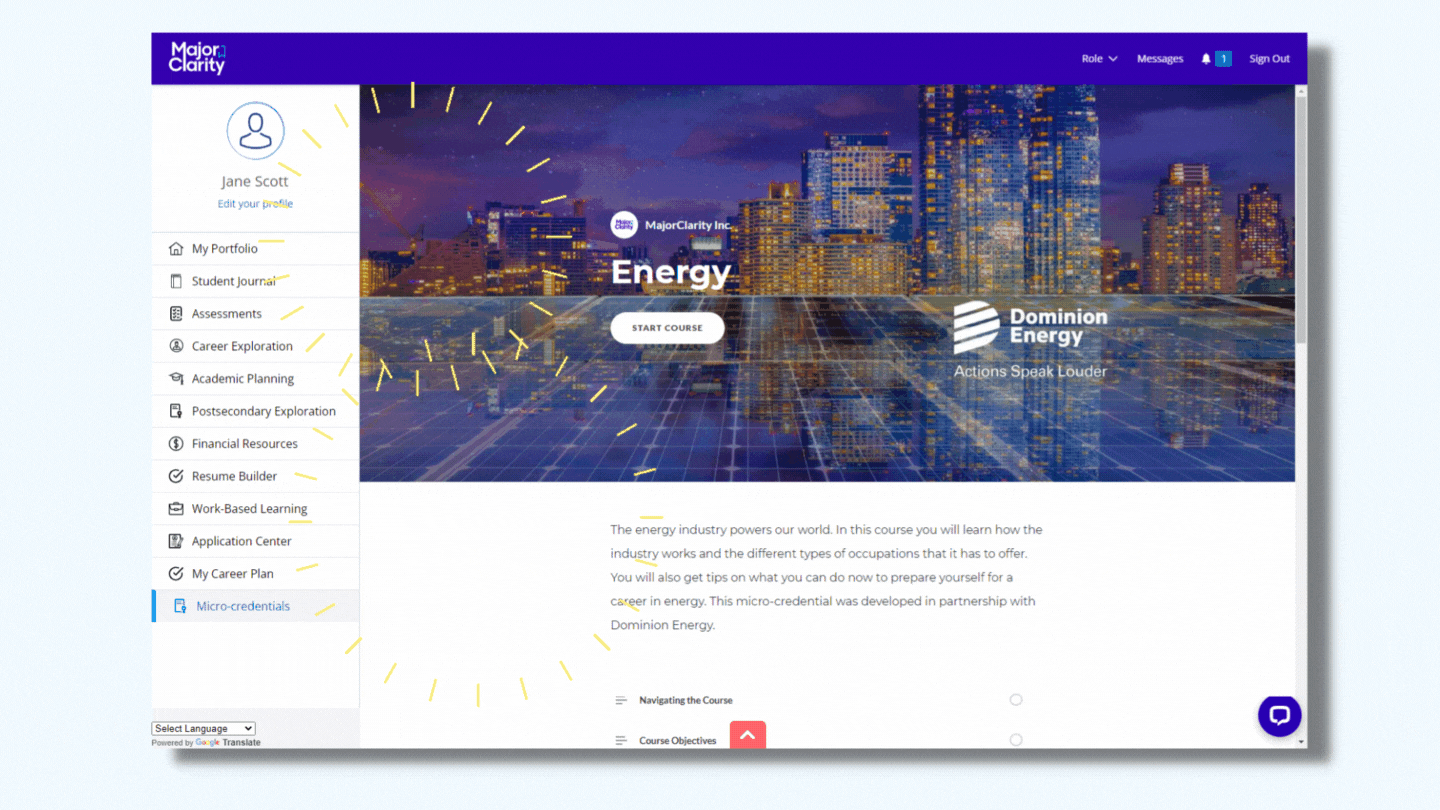WEBINAR REPLAY: Getting Creative with Work-Based Learning Experiences 👉 View now
Micro-credentials: the future of career exploration
As colleges and employers move from strict quantitative requirements to holistic evaluations, Micro-credentials give students a competitive edge on postsecondary applications while encouraging next-level career exploration.

NEW Energy Micro-credential
Investing in Energy Careers
AUGUST 2022 - The energy career cluster is the country's emergent career cluster—one that is being formally acknowledged in a growing number of states.
Built in partnership with Dominion Energy, the new Energy micro-credential provides valuable tools for students, families, and school districts to explore careers in the continuously evolving energy career landscape.


How MajorClarity's Micro-credentials Work
Micro-credentials are 3-5 hour crash courses for in-demand careers like software programming, nursing, and HVAC services.
Designed in consultation with leading national institutions like the National Technical Honor Society, students can use micro-credentials to "test out" career interests in an academically rigorous but approachable way—regardless of whether they're pursuing college, the military, or employment, or all of the above.

Richard Skipper,
Director of CTE

“Being the career platform and the planning avenue for students… [MajorClarity] has dynamically multiplied the career counseling experience for our students.”
Request more info:
Why K-12 Districts Are Using Micro-credentials

Leveraging Industry Partnerships
Each MajorClarity Micro-credential course is built in collaboration with an industry partner or professional organization to ensure content is relevant and aligned with modern standards.
And because they've been designed with some of the biggest names in their industry, micro-credential certifications carry the added weight of name recognition for students applying to postsecondary opportunities.

Lowering the Stakes of Postsecondary Exploration
Only 63% of students graduate from a 4-year college within 6 years—and 43% of those graduates still end up underemployed.*
For most students, college is no longer an affordable option for defining their career pathway. Micro-credentials lower the stakes, allowing students a shorter, free window to experience the academic demands for their chosen career path.
*Sources: NCES & Forbes
-1.png?width=500&height=353&name=Webinar%20backgrounds%20(5)-1.png)
-1.png)
Preparing Students for Work-Based Learning
Demand for work-based learning opportunities is on the rise—and for students, securing one is more competitive than ever. While districts work with employers to increase the supply of WBL opportunities, Micro-credentials can provide students access to careers not readily available in their area.
For younger students, courses like the General Employability & Soft Skills Micro-credential provide a foundation and pre-qualification step for students before they even start their internships.
WEBINAR REPLAY
Giving students opportunities to experience careers before they graduate is one of the best ways to take risk out of postsecondary decision-making—and build important soft skills. But local opportunities and other logistics often make it hard to meet student demand.
Explore 5 creative models for giving students opportunities to experience their career interests and build partnerships with local workforce providers.
“Having a digital platform puts students in the driver’s seat. The last program we used had some video and activity content, but not like this. Our students had to do a lot of digging. With MajorClarity, they can log in, research, compare, and save post-secondary opportunities—all in one spot."
.png)
Ginger Jones,
Director of Counseling



.png)